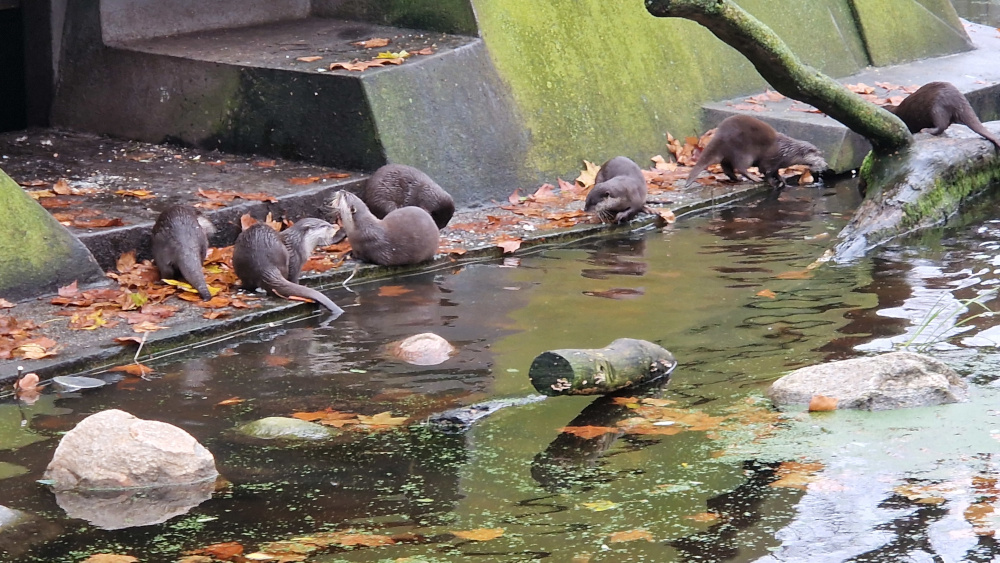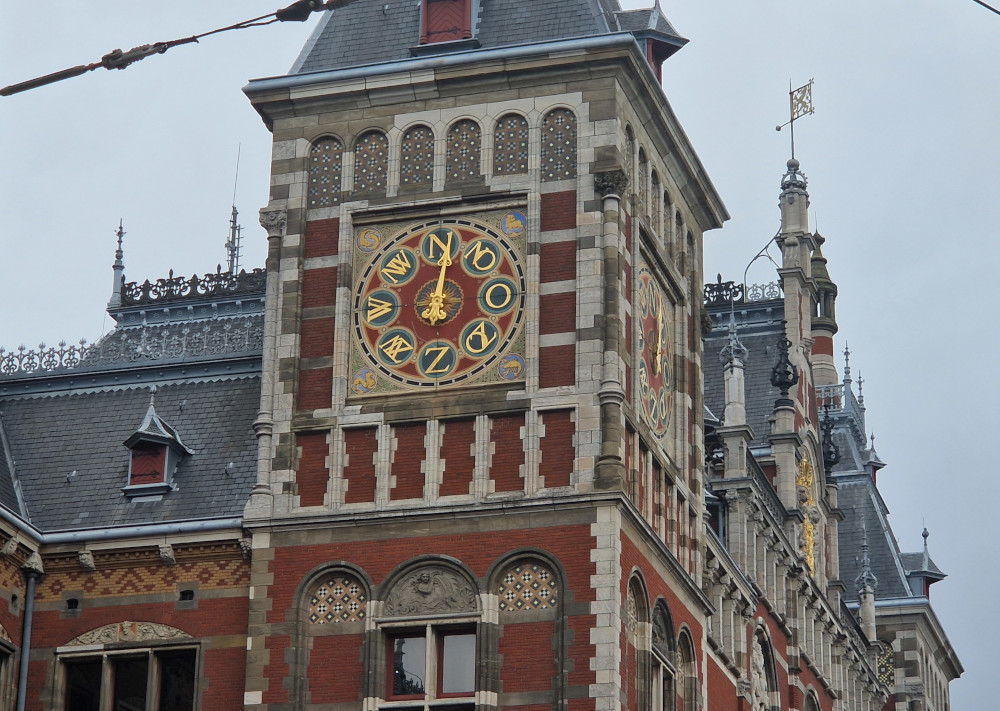Oh, cripes, i’ve waited far too long. I’ve got, like, twenty films to review now. Shall we just get on with it? Let’s.
Butch Cassidy and the Sundance Kid (1969)
I can’t lie — this is the first western i’ve actually liked, rather than just going “oh, yeah, i can see the craft.” I love that the two leads just bicker like an old married couple the entire time. It’s amazing what Robert Redford can do with just one look at the camera. (8/10)
GoldenEye (1995)
Watched at the Tyneside for its thirtieth anniversary. As someone who had only previously known 007 via the gritty Craig-era films… James Bond is kind of a menace to society in this? Somebody, please call him into HR.
No complaints, though — the goofy, quippy (but self-serious!) action here is much more my speed than Mr Craig’s dour grimacing. We’re introduced to Pierce Brosnan (who is generationally sexy in this, incidentally) by him ambushing someone upside-down in a toilet, for heaven’s sake!
After some deliberation, i… think i like Éric Serra’s score? His brand of trip-hop weirdness lends itself better to sci-fi like The Fifth Element, but it’s what makes GoldenEye GoldenEye, warts and all. (8/10)
A Nightmare on Elm Street 3: Dream Warriors (1987)
The first time i watched this it was with a VR headset strapped to my face, lying in bed, and i thought it was just as good as, if not better than, the first one. Then i watched them back-to-back and that illusion shattered. Still, there are some wonderful special-effects setpieces that have to be seen to be believed. (6/10)
The King’s Speech (2010)
It is reported that the Roman emperor Xanthe said, on his deathbed, “I think i’m
becoming a dad.” (5/10)
Audition (1999)
0.00.00–1.40.00: A romantic dramedy with a mystery thriller buried underneath.
1.40.00–1.52.00: LiveLeak footage.
Oh, Japan. What would we do without you? (7/10)
Scream (1996)
I found Scream exscreamly underwhelming, but i can’t give it a bad rating in good faith — it’s a classic example of the “Seinfeld is unfunny” effect, where an innovative work is copied so often that when you go back and watch it, you’re like, “that’s it?” Our modern media landscape is so meta that Scream doesn’t even register as particularly self-referential. …Also, i was on my phone for a lot of it. Sorry. (N/A/10)
Tron: Ares (2025)
Fuck you, i liked it. I went to see a Tron movie because i wanted some pretty sci-fi action with a banging score that shakes the Imax screen, but terrible characters and an uninteresting plot, and i got exactly that. What were the rest of you expecting? (6/10)
Dracula (1958)
A competent, if compressed, adaptation which features surprisingly little of Christopher Lee for how key the role is to his reputation as an actor. (6½/10)
Network (1976)
You have meddled with the primal forces of nature, Mr Beale, and i won’t have it! Is that clear?
You think you’ve merely stopped a business deal. That is not the case! The Arabs have taken billions of dollars out of this country, and now they must put it back! It is ebb and flow, tidal gravity! It is ecological balance!
You are an old man who thinks in terms of nations and peoples. There are no nations. There are no peoples. There are no Russians. There are no Arabs. There are no third worlds. There is no West. There is only one holistic system of systems: one vast and immane, interwoven, interacting, multivariate, multinational dominion of dollars. Petro-dollars, electro-dollars, multi-dollars, reichmarks, rins, rubles, pounds, and shekels.
It is the international system of currency which determines the totality of life on this planet. That is the natural order of things today. That is the atomic and subatomic and galactic structure of things today! And you have meddled with the primal forces of nature! And you… will… atone! (Am i getting through to you, Mr Beale?)
You get up on your little twenty-one-inch screen and howl about America and democracy. There is no “America”. There is no “democracy”. There is only IBM, and ITT, and AT&T, and DuPont, Dow, Union Carbide, and Exxon. Those are the nations of the world today.
What do you think the Russians talk about in their councils of state? Karl Marx? They get out their linear-programming charts, statistical decision theories, minimax solutions, and compute the price–cost probabilities of their transactions and investments, just like we do. We no longer live in a world of nations and ideologies, Mr Beale. The world is a college of corporations, inexorably determined by the immutable bylaws of business.
The world is a business, Mr Beale. It has been since man crawled out of the slime. And our children will live, Mr Beale, to see that... perfect world... in which there’s no war or famine, oppression or brutality. One vast and ecumenical holding company, for whom all men will work to serve a common profit, in which all men will hold a share of stock. All necessities provided. All anxieties tranquillised. All boredom amused.
And i have chosen you, Mr Beale, to preach this evangel.
You could make a list of the Top Ten Movie Rants, have them all be from this film, and nobody would have any reason to complain. Possibly the best-scripted film i’ve ever watched. I’m as mad as hell, and i’m not going to take it anymore! (10/10)
Bugonia (2025)
Another home run from Lanthimos and Stone. Jerskin Fendrix’s rousing score successfully found its way into my top five played songs of the year, according to Youtube Music, and i only bloody watched this film in November!
It’s also remarkable how Jesse Plemons is slowly metamorphosing into Philip Seymour Hoffman as he ages. (9/10)
One Battle After Another (2025)
An exceedingly rewarding rewatch — i picked up on so many little things i didn’t notice in the cinema. The war for my official “best film of the year” is now squarely between this, Bugonia, and (depending on a rewatch) Caught Stealing. (9/10)
The Green Mile (1999)
For a movie about Tom Hanks’s UTI, it’s pretty good. Not sure we needed to spend three hours on the story of his piss, though. (6/10)
The Running Man (2025)
Edgar Wright’s heart-pumping, kinetic action suddenly turns flaccid in the third act, but overall, i still quite liked this! Glen Powell’s a real star. (6½/10)
Wake Up Dead Man: A Knives Out Mystery (2025)
Tighter plotting than its two predecessors unfortunately leaves little room to get attached to any of our wacky side characters. It’s an interesting conceit, and there’s stuff to like, but on the whole, Wake Up Dead Man is stiff, devoid of life. (5/10)
Dream Scenario (2023)
A strange, sad film that plays like a Truman Show for the age of social-media mobs. Nic Cage has a way of elevating anything he’s in, from the lowest shlock to the highest art. (8/10)
Gremlins (1984) and Gremlins 2: The New Batch (1990)
Merry Christmas, you filthy animals! I hadn’t watched the original in some time, and was surprised at how much darker in tone it was — it’s a legitimate horror film at times!
Watching both back to back has given me a new appreciation for Gremlins 2. The best part of the original is the bar scene, and G2 is nothing but the bar scene, for an hour and a half straight. Pure cinema. (11/10)
Human Traffic (1999)
Trainspotting is about how life is short and you shouldn’t ruin it with drugs. Human Traffic is about how life is short and you should thus do as many drugs as possible so you can squeeze all the enjoyment you can out of it.
It’s a damned shame that director Justin Kerrigan never did much afterwards, because there’s such style packed into Human Traffic’s hundred minutes. The film is deeply indebted to Danny Boyle, and i’d have loved to see how his style developed in its own independent direction afterwards. Alas, he seems to have been tied up in a protracted legal battle with the film’s producer, and has only made one film since. Mr Kerrigan, if you’re reading this: Please try again? Please? (8/10)
The Maltese Falcon (1941)
My word, people talked quickly back in the day. (7/10)
Sasquatch Sunset (2024)
For years, i have terrorised family movie night with weird crap, and my sins have finally come back to haunt me. I’m never forgiving my stepdad for making me watch sasquatches fucking. I will say, there’s something to this absurdist environmentalist assembly of grunting Bigfoots, but i don’t know how much! (ℵ₀/10)
Stir Crazy (1980)
Every line uttered by Gene Wilder and Richard Pryor is pure comedic brilliance. Everything else is barely watchable. (4/10)


